In the 1950s, the Bronx was a melting pot of immigrants and first-generation families: Jewish, Italian, and Irish alike. Peter Quinn shares his story of what it was like to be a Bronx Irish Catholic, commonly referred to as a B.I.C.
“Breathes there the man, with soul so dead, / Who never to himself hath said, / This is my own, my native land! / Whose heart hath ne’er within him burn’d, / As home his footsteps he hath turn’d…”
– Sir Walter Scott
Native land means different things to different people. To some it’s a nation with well-defined borders, like France or Sweden; to others, it transcends borders, à la Ireland or Korea. For many, I think, the term native land invokes something more intimate and parochial: a patch of earth that, no matter where life takes us, stays synonymous with home. For me, that place is the Bronx of the ’50s and ’60s, a lower-middle- / middle-middle-class agglomeration of apartment houses, single-family homes, and small businesses sprawled between the Long Island Sound to the east and the Hudson River to the west, a so-called bedroom borough whose north-south subway lines transported inhabitants to and from jobs in Manhattan.
Reeking of exhaust and incinerators, the Bronx was chockablock with pizzerias, German and Jewish delis, and Irish bars; blessed with spacious parks, a world-class zoo and botanical garden; and possessed of the Ruthian diamond – the crown jewel of major league baseball – Yankee Stadium.
The skyline looming to the south was the imperial city – a dream-big place, proximate yet far away. Ours was the workaday, no-illusion city, its concrete precincts filled with cops, firemen, pipefitters, clerks, mechanics, motormen, taxi drivers, teachers, housewives, shop owners, wire lathers, civil servants, and union members, the everyday people who kept the place running.
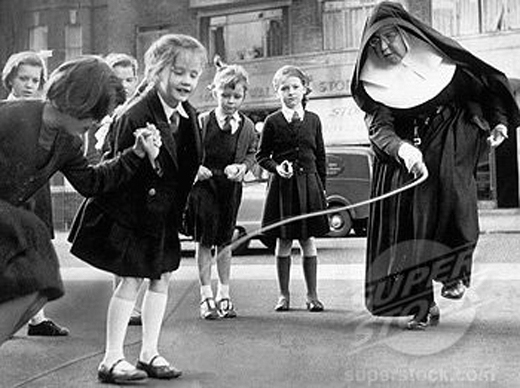
Solid, stolid, often the butt of jokes (“The Bronx, no thonx,” wrote Ogden Nash), the borough was a small-scale Yugoslavia: ethnic enclaves interspersed with areas in which, though physically mingled, groups lived psychically and culturally apart.
Jews, by far the most numerous population, branched out from the Art Deco stem of the Grand Concourse. Highbridge, Kingsbridge, and Woodlawn were heavily Irish. Fordham, presided over by the Jesuit Gothic of the eponymous university, was bordered to the west by the well-heeled Irish parish of St. Nicholas of Tolentine and to the southeast by Belmont, a tight-knit Italian village of modest apartment buildings and meticulously tended one- and two-family homes.
The once-Irish / Jewish South Bronx filled with newly arrived Puerto Ricans and African Americans. The East Bronx was a trifecta of Jews, Irish, and Italians. Riverdale, in the borough’s northwest corner, felt like an appendage of suburban Westchester County. Fieldston, adjacent to it, was a privately owned enclave of privilege and palatial homes.
Home to almost a million-and-a-half people, the borough had only one real hotel, the Concourse Plaza. It was often referred to as “the Bronx’s Waldorf Astoria” – a description more aspirational than exact, which is not to say it wasn’t a fine place to spend the night. Around the corner from where my wife was raised and a Mickey Mantle home run away from Yankee Stadium, the Concourse Plaza is at the center of the 1956 movie The Catered Affair, a tale of working-class Irish-Catholic parents in conflict over their daughter’s wedding reception.
In an improbable feat of casting, the taxi-driving, Irish-Catholic dad is played by Ernest Borgnine, the daughter by Debbie Reynolds, and the mother by Bette Davis, whose attempt at a Bronx accent is somewhere between a misfire and weird. (Barry Fitzgerald, her brother, has a rich Irish brogue, a discrepancy left unexplained.) The movie was based on a television play by Bronx native Paddy Chayefsky, who the previous year had won the Academy Award for best screenplay for Marty, another Bronx tale with Ernest Borgnine in his Academy Award-winning role as an Italian-American butcher.
I recall Marty receiving accolades from relatives and neighbors. Scenes shot in the Bronx and mentions of places like Fordham Road and Arthur Avenue sprinkled Hollywood stardust over the borough’s prosaic precincts. As opposed to Marty, which had a ring of authenticity, The Catered Affair was a blatant attempt to piggyback on the success of its predecessor, with Irish characters substituted for Italian. The screenplay was written by Gore Vidal who, if pressed, could probably have located the Bronx somewhere between Montreal and the Upper East Side. The movie earned mostly Bronx cheers.
We Bronx Irish defined ourselves as much by parishes as neighborhoods. I was from St. Raymond’s, in Parkchester, in the East Bronx. Founded in 1842, it was the first Catholic church in Westchester County. (The Bronx became a separate county in 1914. The five boroughs of New York City are coterminous with state counties.) In the burial yard in front of the church were three towering Celtic crosses, monuments to the half-century reign of a triad of Irish monsignori. Despite all belonging to the genus of B.I.C. (Bronx Irish Catholic), we at St. Raymond Elementary School considered ourselves distinctly different from our counterparts in the neighboring parish of St. Helena’s.
A planned community of 12,000 apartments spread across 171 buildings between seven and 13 stories, Parkchester was created by the Metropolitan Life Insurance Company, which also financed construction of Stuyvesant Town in Manhattan. Parks and open spaces were strategically placed. The main means of transportation were subways and the extensive system of city-owned bus lines. But in anticipation of a rapid increase in car ownership, there were multistoried garages and copious parking spaces.
Parkchester’s residents were overwhelmingly Jewish and Catholic – Irish in the main. The few Protestants who lived there were regarded with curiosity. Up until the 1960s, Metropolitan Life excluded African Americans from both Stuyvesant Town and Parkchester. This was of a piece with the intransigent residential segregation that prevailed (and still prevails) across large swathes of the city. Desperate to increase the supply of middle-class housing – at least for whites – New York’s progressive mayor, Fiorello LaGuardia, reluctantly went along. (Ironically, the oval at Parkchester’s center once contained the ballfield on which the Negro League’s Lincoln Giants played their home games.)
Parkchester was built on the site of the old Catholic Protectory, which was founded in 1863 by Archbishop John Hughes, the Ulster-born hierarch who established Fordham University, initiated the building of St. Patrick’s Cathedral, and made the New York Irish into a political as well as religious constituency. The Protectory housed orphans and abandoned children, mostly Irish, whom the Children’s Aid Society had begun shipping west on “Orphan Trains” to be settled among God-fearing, Anglo-Saxon Protestants.
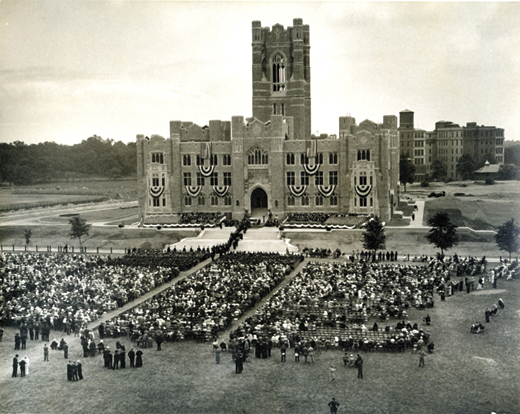
Bordering Parkchester, Morris Park to the west and Castle Hill to the east were heavily Italian. A step behind in terms of assimilation and economic advancement, Italians generally preferred houses with small gardens rather than apartments. Parochial schools brought us together. Friendships blossomed and so did fights. I remember the schoolyard of St. Raymond’s as an asphalt Serengeti where the weak were bullied and Irish toughs battled Italian toughs. (Pugilistically inept, I did my best to be inconspicuous.)
Sometimes the rivalries were humorous. One Italian carting company emblazoned on its garbage trucks “We Cater Irish Weddings.”
When I heard talk of “intermarriage,” it referred to Irish-Italian nuptials. It wasn’t until later that miscegenation escalated into ethnic meltdown and bred a new strain of Hiberno-Mediterranean offspring notable for their good looks.
Over the years, I’ve heard from Jewish Bronxites about suffering verbal harassment (epithets like “kikes,” “sheenies,” “Christ-killers”) and physical abuse from, as one friend put it, “Irish pogromists.” Without doubting their accounts, that wasn’t my experience.
Through all my years of parochial school, I never heard anti-Semitic professions by teachers or clergy. We were told it was our sins that nailed Jesus to the cross. If either of my parents suspected we were cursing or bullying Jews, retribution would have been swift and severe. Yet I had no Jewish friends. We lived separately together. Still, one thing shared by gentiles and Jews was a familiarity with Yiddish. To be a Bronxite was to schlep and kibitz, and to understand the difference between a schmuck and a mensch.
I had no acquaintance with Jewish girls, except one. We rode the 20 BX bus together, she to Walton Girls High School in Kingsbridge, me to the all-male Manhattan Prep in Riverdale. I sat in the back with my school buddies, she in front with her classmates. The first time I saw her, I was smitten by her thin and graceful figure, clothes loose and flowing (our style then was tight), thick black curls (the fashion was long and straight) – an early-blossoming flower child. It was part of growing up in the Bronx to figure out, as quickly as possible, a person’s tribe. I identified her Jewishness in the same way, if she bothered to notice, she perceived my goyishness.
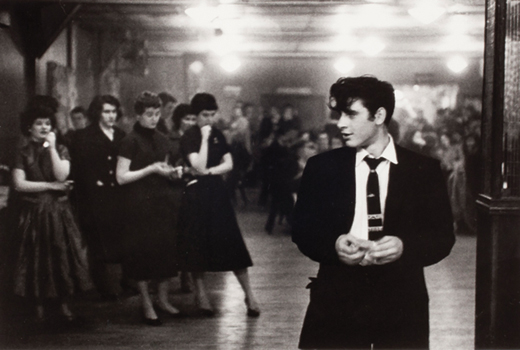
We never spoke. And then, one September, she was gone, off to college, I presumed. I spent months bereft. Recently, for the first time in 50 years, I rode a bus along the old route, and it all flooded back, my lonely-hearts Bronx tale, unbridgeable worlds in the same borough, on the same bus.
My first ancestors arrived in New York when Margaret and Michael Manning fled the Great Famine. Margaret Manning, their daughter and my paternal grandmother, was born in 1863, in the village of Fordham – at that time part of Westchester County – and baptized in the university church. (It was then called St. John’s College.) My grandfather Patrick Quinn, a union organizer, was born in Tipperary in 1859. His family emigrated to New York in 1870. He married Margaret Manning, a seamstress, in St. Brigid’s Church on the Lower East Side in 1899. They moved to the Bronx in 1914, where they bought a small house in the West Farms neighborhood which, despite its name, was absent all things agricultural.
Contrary to the notion of Irish obsession with ancestry, my family showed little interest in the past. My mother had an active disinterest, routinely tossing out documents and obfuscating or bowdlerizing the fate of relatives who fell victim to impoverishment or their own misbehaviors (or both). The primary focus of my parents and grandparents wasn’t on the Irish past but the American future, and their children’s role in it.
My father recalled that as a boy on the Lower East Side he shared a room with his older brother in which they rarely stayed. My grandparents hosted relative after relative as they arrived from Ireland, until none were left to bring over. If my grandfather heard anyone sentimentalizing about the old country his instant riposte was, “If you miss it so much, why don’t you go back?” Romantic Ireland didn’t ring very convincingly in crowded tenement rooms.
Catherine Riordan of Blarney, County Cork, landed at Castle Garden in 1888. (It would be four years before Ellis Island opened and processed its first immigrant, Annie Moore, also of County Cork.) Though Catherine claimed to be 18, it’s more likely she was 15 or 16 and lied about her age so she could join her older sister as a domestic and begin sending remittances home to finance her siblings’ journeys. She stayed in maid’s work until she met James Murphy, a native-Irish speaker from near Macroom, who worked as a mechanic at Yorkville’s Rupert Brewery. My mother, Viola Murphy, the last of their six children, was born on the top floor of a four-story walkup on 149th Street in the Bronx.
Coming of age in the 1920s, my parents belonged to the first truly modern generation. Electricity rolled back night and blazed the Great White Way. New appliances alleviated the burden of ancient drudgeries. Movies and radio revolutionized entertainment. Cars and airplanes shrank old barriers of distance. Credit and the installment plan made commonplace what were once luxuries. People’s expectations rose exponentially. The population of the Bronx tripled to 1.2 million in 1930 from 400,000 in 1910. Progress and prosperity were presumed, with America in the vanguard, and Jazz Age New York ahead of all.
While none of my grandparents went beyond primary school, my parents graduated from college. My father received a B.S. in civil engineering from Manhattan College (despite its name, it’s in the Bronx) and worked on the construction of the IND subway while attending Fordham Law School at night. My mother was a classics major at Mount Saint Vincent in Riverdale. They met in 1928 at a parish St. Patrick’s Day dance in the Bronx. They loved nightclubs, the theater – musicals, the Marx Brothers, Shakespeare – and reveled in the speakeasy hubbub in which my mother’s bartender brother was much admired for his skill as a mixologist.
The presumption that they had escaped their ancestors’ world – a chronicle of unhappy endings that culminated in starvation and migration – was rocked by the Crash of ’29 and the Great Depression. My mother lost her small savings as a teacher when the Edgewater Savings Bank folded. Her immigrant father lost his life savings, the accumulation of 40 years working in a brewery. Pensionless, he worked until he died. My two aunts, one a teacher, the other a secretary, stayed unwed and at home to support my grandmother.
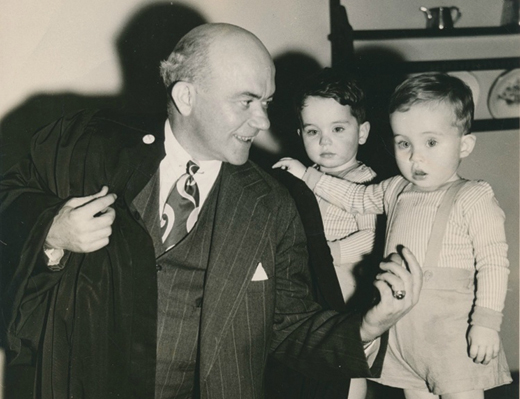
Though he had an engineering and law degree, my father struggled to find a full-time job. He volunteered with the local Democratic Club. Edward J. Flynn, the formidable Fordham-educated leader (a.k.a. “The Boss”) of the Bronx Democratic organization and a confidante of Governor Franklin Roosevelt, took a liking to him. Flynn sent my father to the 1932 Democratic National Convention in Chicago as part of a contingent that worked behind the scenes to keep the New York delegation in line for FDR. My father campaigned hard for FDR, speaking around the city from the back of a flatbed truck. In 1936, he was elected to the State Assembly. A week after the election, eight years after they met, my parents were married.
My father spent the rest of his life in Bronx politics, serving in the assembly until 1944, then a term in the U.S. Congress (he was one of the two congressmen from New York who rode FDR’s funeral train to Hyde Park), and the rest of his career as a judge of the municipal court, chief judge of the city court, and a justice of the State Supreme court. He was at home in the Bronx, in the parish in which he grew up.
His obituary in the New York Times states that his “associates described him as a witty and brilliant man who loved to sing Irish songs and tell Irish stories.” My father and mother were both fine singers and dancers. The songs were mainly from Broadway shows or The Great American Songbook, the dances foxtrots and waltzes, not reels and jigs. The “Irish songs” weren’t folk tunes but Irish-American favorites like “Harrigan,” “Galway Bay,” and their all-time favorite, “How Are Things in Glocca Morra?” (lyrics by Jewish songwriter E.Y. Harberg). The stories my father excelled at telling – stories salted with theatrical mastery of dialects – rarely involved Ireland (when they did, they were ghost stories) and rose instead from his life amid the mishegas of Bronx politics.
I took for granted that the Irish-American world my family existed in for over a century would remain as it was. The election of John F. Kennedy as president in 1960 felt like a capstone. Shortly before the election, Kennedy spoke at the Concourse Plaza. My father, running in his last election for the State Supreme Court, also spoke. Afterwards, Kennedy traveled up the Grand Concourse on the back of a convertible, a quaintly distant, pre-Dallas image. My friends and I stood in front of the Loew’s Paradise, a movie palace that has since then been stripped and defaced, and helped swell the panethnic delirium that arose when Kennedy mounted a platform in front of the long-vanished Sachs Furniture and Krum’s Candy stores.
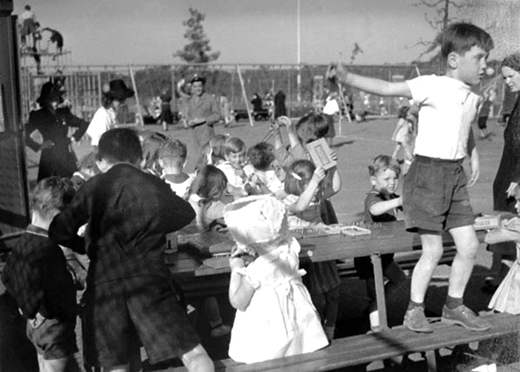
Permanence of any kind is the grandest of illusions. What was different about the Bronx was the velocity with which the illusion crumbled. The origins of the Bronx as one of the city’s five boroughs (the only one on the U.S. mainland) were obscure even to Bronxites. I heard passing mention among my elders of “annexation” and “consolidation,” but the hard-edged, unremitting brick-on-brick streetscapes disguised its overnight transformation from pastoral to metropolitan and made it seem pretty much the same since the Dutch had forcibly evicted the peaceable, innocent Lenapes.
The centrifugal swirl that memory insists descended suddenly, like a fast-moving storm, had been building for some time. The pharaonic schemes of Robert Moses carried traffic around and across the Bronx to Long Island and New Jersey. The fund-starved, once-efficient public transit system creaked and sputtered. FHA mortgages spurred the upwardly mobile, suburban aspirations of would-be homeowners and at the same time maintained and abetted the enduring injustice of residential apartheid that condemned minorities to a decaying, substandard housing stock.
Economic change drove social change, and reinforced it. Vatican II altered our unalterable church. Priests and nuns molted back into civilians. Parishioners moved away. Once-thriving parishes became enfeebled. Rock’n’roll and the sexual revolution made the generation gap seem more like a chasm. Crime, and fear of it, escalated. The Concourse Plaza became a welfare hotel. The celluloid Bronx of Marty and The Catered Affair, the home of good-hearted working-class stiffs, descended into Fort Apache, The Bronx – a crime-ridden wasteland ruled by drug addicts and crooked cops. Formerly a synonym for low-rent blah, the borough was now “the burning Bronx,” a global synecdoche for urban ruin.
The future fled the Bronx. Friends moved away or never returned from college. Soon enough, I followed, serving as a VISTA volunteer in Kansas City. Beckoned by the beautiful and new – everything the Bronx wasn’t – I felt the lure of California. It was then, for the first time, I thought about what I was leaving behind: the saga of the Atlantic passover from poverty and subservience to steerage and immigrant tenements; those who made it, those who didn’t, those whose names I knew, those I didn’t. I turned my footsteps home and returned to New York.
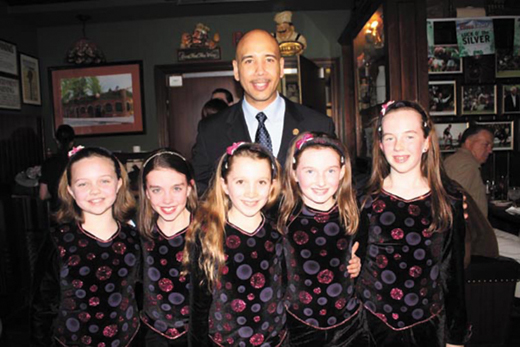
I attended Bronx Catholic institutions from kindergarten to the last stages of a PhD. Though they were all founded or largely staffed by Irish and Irish Americans, my first encounter with Irish history was in a college course on Victorian Britain. The past was a blur. It was as if we emerged from the shadows and fully entered history when we came to the Bronx.
My threadbare connection to Michael Manning, my great-grandfather, was my father’s memory of him as a blind old man, quiet and gentle, who never talked about what led him to emigrate other than to say that he would never think about going back “until they hanged the last landlord.” Except that he was born in pre-famine Ireland and emigrated before the Civil War, all I knew of him was a line in the census – “occupation: laborer” – and the place of his death on January 10, 1910: 296 East 7th Street, a long-ago demolished tenement. I later learned the name Manning was an errant transcription of Mangan that, for whatever reason, stuck. The rest was silence.
When I returned to New York, any research I did was lackadaisical and accidental. So was my career. I worked as a Wall Street messenger, a court officer in Bronx Landlord & Tenant Court, an archivist at the New York Botanical Gardens (natives always refer to it as the Bronx Botanical Gardens), et al., until I found my way to a graduate program at Fordham. I was a graduate assistant to the late Maurice O’Connell, a scholar of Irish history and descendant of Daniel O’Connell, the Liberator – a towering figure in that history.
I traveled to Ireland and studied there. Though I felt an intimate connection to the land and people, I confronted the fact it wasn’t home and I didn’t belong. On one occasion, I took my mother to her father’s village. Not a trace of the family remained. The journey my ancestors made was final and irreversible. Caught on the hyphen between this small island to the east and the vast continent to the west, I recognized that my native land was the interspace on America’s Atlantic ledge.
Why the past means so much to some and not much – or nothing at all – to others is hard to figure. At bottom, I think, it involves history as therapy, as a key to understanding self as well as society, as a restless desire to uncover what we don’t know about ourselves, however partial or fractured that must be. Perhaps that hope was best captured by New York novelist and memoirist Kathleen Hill when she wrote, “our journey toward understanding the selves we had considered lost forever or, worse, have never even missed, may be restored if we are patiently attentive to our inner promptings.”
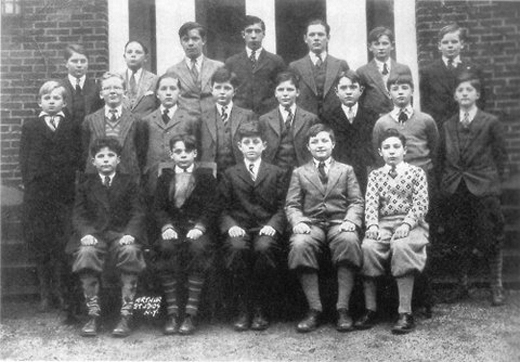
upscale Riverdale section of the Bronx in the late 1920s.
In the early-morning hours and in the time I could game or grift from my corporate day job, I began trying to reconstruct what I could of my ancestors’ immigrant world. It gradually dawned on me that the history I sought belonged to lives too unimportant to record, people who suffered history rather than recorded it: servants, laborers, anonymous poor, ordinary moments that weren’t written anywhere, the intricate tangle of existences shrunk to generalities, statistics, accidental mention, a census line.
Despairing of history, I decided to venture into the terra incognita of fiction and attempt a novel set during the Civil War Draft Riots, an epic explosion – part race riot, part insurrection – that tore New York City apart and exposed the perennial, often feral struggle among those at the bottom of American society.
I copied paragraphs from novels I admired, scribbled the beginnings of the story I wanted to tell. I researched, wrote, despaired, rewrote, deserted, returned, persisted across an entire decade. I discovered in fiction truths I didn’t in history. I grappled with the power of the past to bolt in place the exoskeleton that supported and shaped – sometimes misshaped – expectations and relationships far into the future. I came to grasp the human need to forget as well as to remember. I learned that what goes unspoken, unacknowledged, has the greatest sway of all. Everything around me, parish, school, politics, religion, the Bronx I grew up in and carry with me, sprang from and contained what came before. The past never goes away, I realized; it only goes ignored or denied.
My characters became my companions, comrades-in-arms, soulmates, a company of aspiring, compromised, lustful, decent, cowardly, ruthless, compassionate, befuddled human beings – Irish, African Americans, old-stock New Yorkers – that I gathered under a phrase from a prayer I said since childhood: “banished children of Eve.” Some were imaginary, some reconstructed from random facts and fragments inherited from my family, some, like Stephen Foster and John Hughes, real.
I listened as they mumbled, murmured, shouted, revealed themselves. They prompted me, guided me, led me through the vale of tears and weeping, laughter and rejoicing, that each generation travels in its own way. They gave me back the past and reminded me of what I thought I didn’t know. They taught me that the borders of our native land are the borders of our hearts. ♦
_______________
Previously published in the December 14, 2018 issue of Commonweal.

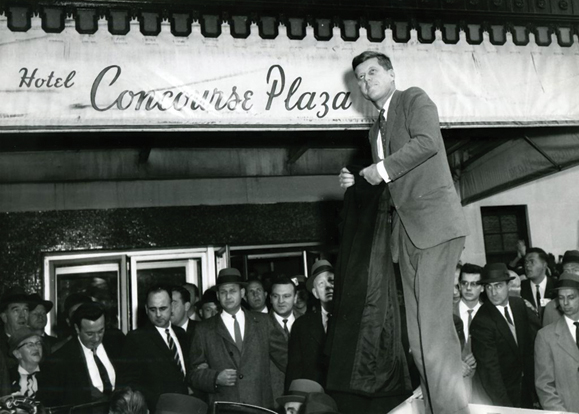
Great article. My grandfather, Michael Donohue, father of Brian, Joan and Mike Jr. and husband of Virginia , lived in Parkchester and his children went to St. Raymonds. Be great to hear from anyone who may have k own them.
I hope this message gets to the author – one of the Quinn twins from 1 Met Oval. It is written by one of the Flynn twins from 5 Met Oval (Michael). Perhaps you remember me, maybe not but it was great seeing your name and learning of your wonderful career. I am now living in Australia with my beautiful wife Deanne. Contact me at my e-mail address listed above. Regards to you and your brother Tom.
No body can tell our story better then Peter Quinn. From this BIC Patricia Farrell. Only our generation knows what BIC stands for and it isn’t just ‘Bronx Irish Catholic’ lol
Hi Peter. It is always a treat to travel through time with you in your stories. I can shut my eyes and be back in 4C. Your vocabulary is a bit grander but you’re the same guy. St. Helenas / St. Raymonds. Definently an edge there. How special St Helenas was. And St . Raymonds too. How lucky were we.
Of much Irish heritage- (A bit of Italian, too!)I had the pleasure of growin’ up in “Da Bronx” and going to Catholic School, aka St. Nicholas of Tolentine on Andrews Ave. Have seen and enjoyed your shows re: The Irish and the Bronx. Thanks.
I’m a BIC from Fordham rd.!
Wonderful article, beautifully written – the Christian Brudders should be proud of you! I remember you Peter, and your brother who was never in your same class at St Rays, I remember playing football in the concrete ball field. Weren’t you also on Hawthorne Dr – we were at 1507. Such great memories. Many thanks,
Just curious. My Grandmother (from Claremorris, Co. Mayo) lived, in her later years, on E. Tremont Ave.,a block from the entrance to St. Raymond’s Cemetery. I thought that area was part of Throgg’s Neck. Is the cemetery some distance from the “reported schools” (in Parkchester)?
Also, in the 1950’s I was beginning my attraction to things Irish, and I started going to Irish dances in Manhattan and the Bronx. I found that all the girls, even those from Brooklyn, identified their addresses by parish, not geographic location. It befuddled me, a guy from Astoria, Queens. I could never figure out where they lived. I thought this behavior might have been a carry over from the Irish Hunger immigrants, who, back in Ireland, probably related their home locations to churches as well, not knowing much about political or civil geography. Having said that, I know that references to Townlands were common. Interesting, in that I wonder whether any other religious or nationality groups used their church names to identify their addresses in New York City..
Yes, James, the cemetery is quite a distance from either school.
This was sp pleasurable to read! I am swimming in the Sea of Nostalgia! I attended St. Nicholas of Tolentine (which seemed overwhelmingly Irish) from 1945 till 1950 when we moved to Bedford Park Blvd.and I graduated from St. Philip Neri(which definitely was 50/50 Italian and Irish.That is when I learned to love pizza and to enjoy street fairs!
My friends and I so enjoyed the Botanical Gardens where we ice skated in the winter and climbed high rocks and picnicked in the warmer weather. Mt . St. Ursula Academy was the very strict and scholastically tough high school that prepared me very well for college in Wash.D.C.
Evokes lots of memories.
At least two things missing for me.
Cardinal Hayes HS
and
St. Helena’s dances!
My grandfather came to New York straight off the boat from Ireland. My dad was the first born generation in America. He’s from the Bronx. Big Irish catholic family- the Hughes Family. I know my family has ties to the first Catholic Church in Manhattan I think. My great uncle also was the founder of Fordham University. My dad Bill Hughes was born February 1946. He did spend some of his childhood in a catholic charities orphanage in the 50’s. If anyone has any stories or knows anything about my father or his family. His dads name was Bernard Hughes and his mother’s name was Kathryn Lowry (Hughes). I don’t know much about my father or his family. Any info would be greatly appreciated❤️ Ps Beautiful piece of writing, it took me back to those days and gave me a clear picture of what it must’ve been like. Thank you!
Fabulous article from yet another St. Raymond grad (elementary and high). Great times back then. Fabulous education from the Sisters of Charity.
In the photo with John Kennedy at the top of the page, my dad is pictured in the extreme lower right corner, with the light colored overcoat. He was a Detective in NYPD and was assigned to Kennedy’s security detail. The photo was taken on November 5, 1960. I have another one taken at the same time. We lived in Parkchester and I went to St Ray’s. Great story, by the way.
Hello Peter. I enjoyed the article. I still remember the stately look your father presented back in those days. We lived above you in 5C at 1 Met Oval.
What a beautiful peace on the Irish and the Bronx. Our family moved from Fordham Road and Decatur Ave to Norwood in 1965 to escape the increasing crime and demographic changes. Norwood was lovely then and all of us five kids went to St. Brendan’s. After graduating, two of my siblings went to Cardinal Spellman, another to Mount St. Michael’s, me to All Hallows Institute and a sister to St. Barnabus. It was nice until the late 1970s when the same issues appeared. The entire family left in 1986 for other places and climes where negative urban pressure was not present. Liberals helped to destroy the Bronx. So sad.
What a wonderful piece this is! I have found memories of Parkchester (North Quadrant) and ofcourse, St. Raymonds – we called it “the prison camp” but how lucky we were to have had a childhood to remember there. Dorothy Ryan
I also went to and graduated from St. Raymond’s (elementary and the girl’s academy). What years did you attend Raymond’s, Peter.
i grew up on 1598 Unionport Road, apartment. In the Bronx.. Attended St. Raymonds for seven years; my dad, a NYC fireman, decided to move to NJ….after his fifth child.. I was smiling as I read this because, I have such wonderful memories and lasting presence for having grown up there. Playgrounds, basketball, stick ball, amazing interaction with the kids who were always on the swings,,.the Bronx gave me..strength, appreciation of life and the NY resilience.
As a young girl, I was taught early on to never let anyone tell me what i could not do…i was a the playground MVP…..for some some reason, probably because I was good..at that time, I was welcomed to participate with the boys… Tomboy..I guess was starting to be accepted. .(except for the nuns who used to call my mother and tell her to get me off the courts…I always got a new basketball from my dad at Christmas…Thanks!
In any event, I want on to play in college, overseas in Monaco, and coach at Stanford..without a doubt -thanks to the Bronx! There was, if you could survive, a chance to develop a confident personality and. Never let bing a girl get in the way…. Currently living In Palm Springs,…Thanks Bronx! Irish Catholics…and a place, at that time where I developed my life. Dotty McCrea, Ed.D…. I even continued my education!! In Catholic colleges.